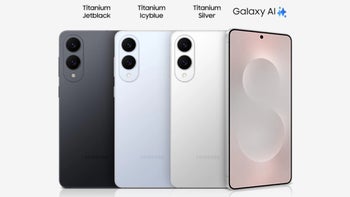Google Pixel 10 Pro XL vs OnePlus 13: Main differences to expect

Intro
The Pixel 10 Pro XL is coming our way very soon, and while we have not yet been subjected to the usual overwhelming barrage of leaks (which is usually the case with Pixel phones), we seem to know a lot about the upcoming Google flagship phone.
It doesn't seem that we are getting any major changes with the Pixel 10 Pro XL in comparison with the Pixel 9 Pro XL, which means that Google is happy with what it has achieved with last year's flagship.
In the other corner, we have another intriguing Android device, the OnePlus 13. The latest flagship by the company that's not keen on settling comes with all the bells and whistles you'd expect from a modern 2025 device, and then some.
Would the Google Pixel 10 Pro XL come up on top, or is the OnePlus 13 destined to be the better phone to get this year?
Pixel 10 Pro XL vs OnePlus 13 expected differences:
| Pixel 10 Pro XL | OnePlus 13 |
|---|---|
| Design similar to the Pixel 9 Pro XL | A compact phone with a flat design language |
| 6.8-inch screen with ~3,000 nits of peak brightness | Slightly sharper 6.8-inch display |
| 3nm Google Tensor G5 chipset | 3nm Snapdragon 8 Elite chip |
| 16GB memory | 12GB of RAM on deck |
| 128GB of base UFS 3.1 storage, up to 1TB likely available | 256GB/512GB of faster UFS4.0 storage |
| ~5,000 mAh battery | 6,000 mAh battery |
| Slower 37W wired charging | Faster 100W wired charging |
| Slower 23W wireless charging | Faster 50W wireless charging |
| 50MP+48MP+48MP rear camera | Triple 50MP rear camera |
| 42MP selfie camera | 32MP front-facing camera |
| IP68 water and dust resistance | Stronger IP69 water and dust resistance |
| More exciting native AI tools | A slightly more rudimentary AI experience |
Table of Contents:
Read more:
Design and Size
Modern flagships
If the rumor mill is anything to go by, we shouldn't expect any major changes with the Pixel 10 Pro XL. It seems Google is happy with the design language of the Pixel 9 Pro XL and sees no problem to reiterate it for another year in a row. Truth be said, we were quite impressed with the Pixel 9 Pro XL's design, which was definitely a highlight of that phone, so we see no issue with this year's version looking the same.
That said, the rumor mill also says that there might be some small changes here and there. The Pixel 10 Pro XL will reportedly be 0.1mm shorter than the Pixel 9 Pro XL––not a difference you're going to notice, but probably enough to render your cases barely compatible with the new device.
The Pixel 10 Pro XL will feature a flat aluminum frame, with Gorilla Glass Victus 2 at the front and at the back. While we don't know what colors the new device will be available in, we expect some pleasing pastel colors like the Pixel 9 Pro XL's Obsidian, Porcelain, Hazel, and Rose Quartz hues. The device will most certainly be an IP68-rated one, well-protected against dust and water.
| Google Pixel 10 Pro XL | OnePlus 13 |
|---|---|
| Thickness ~8.5mm | Thickness 8.5mm |
| Weight ~221 gr | Weight 210 gr |
On the other hand, we have the OnePlus 13, a phone that exemplifies the best design practices of OnePlus––a modern device with a flat aluminum exterior that's surprisingly compact for what it packs inside.
Unlike previous OnePlus phones, where a slight curve on the 6.8-inch display was still present, the OnePlus 13 has a flat screen that spans from side to side, with very thin bezels all around. There's no Corning Glass here, though: the phone uses OnePlus' Ceramic Guard coating.
Size-wise, we currently expect the two phones to be quite similar in terms of overall dimensions and thickness, but the Pixel might be slightly heavier.
One aspect in which the OnePlus 13 will remain ahead is the water and dust resistance. While most flagships support IP68, this one has the more impressive IP69 certification. This one means that the OnePlus 13 can survive high-pressure pulses from different angles, which makes this one even more durable.
The device is available in three colors: Arctic Dawn (white), Black Eclipse (black), and Midnight Ocean (blue), which also has a vegan leather finish.
Display Differences
We currently don't expect the Pixel 10 Pro XL to score a display size increase. In fact, we don't expect any major changes in the display section at all.
This means that we're likely getting the same 6.8-inch Super Actua OLED screen with 1-120Hz refresh rate and excellent sharpness of roughly 480ppi. Peak brightness could potentially gravitate in the 3,000-nit brightness window. We currently don't expect the phone to feature an anti-reflective screen coating like you get on the Galaxy S25 Ultra, which probably means you're getting a bright, but reflective screen.
The OnePlus 13 also comes with a similarly sized 6.8-inch OLED screen, with 1-120Hz of smooth refresh rate and slightly higher 510ppi sharpness. The peak brightness here, while officially advertised at 4,500 nits, is a little above 2,300 nits. There isn't an anti-reflective coating here either, leaving room for improvement with future OnePlus phones.
We expect the Pixel 10 Pro XL to come with an improved ultrasonic fingerprint scanner. The OnePlus 13 also comes with such a fingerprint scanner, and it works beautifully.
Performance and Software
Welcome to the 3nm family, Tensor!
The Google Pixel 10 Pro XL is expected to come with the Tensor G5 chipset.
For the first time since the Tensor's inception, we're getting a completely custom-made Google chip. Reportedly, it will be manufactured by TSMC on the company's 3nm manufacturing process, which means one thing only: the days of the under-performing Tensor chips might potentially come to an end with the Tensor G5. This way, the Pixel 10 Pro XL might finally bring some challenge to the Apple A18 Pro and the Snapdragon 8 Elite.
The latter is precisely the chipset that's powering the OnePlus 13. While this isn't the overclocked version of the Snapdragon that's humming inside the latest Galaxy S25 flagships, it's still a proper powerhouse, giving users an ample amount of power at their fingertips.
The Pixel 10 Pro XL might come with 16GB of RAM, enough for all the AI needs of the phone, while the OnePlus 13 comes with 12GB of memory. In terms of storage differences, we expect the Pixel 10 Pro XL to start at 128GB and go up to 1TB in terms of storage. The OnePlus 13, on the other hand, is available with 256 and 512GB versions; it technically is available with up to 1TB of storage, but it's much harder to get that one in the US.
We expect the Pixel 10 Pro XL to come with either Android 15 or Android 16. The OnePlus 13 currently runs Android 15. The Pixel 10 Pro XL will be supported for seven years, while the OnePlus 13 gets four years of software updates.
Camera
The Pixel might have the upper hand here
Rumor has it the Pixel 10 Pro XL camera system will be similar to the one on the Pixel 9 Pro XL, with no changes to the hardware itself. Thus, we're likely to get a 50MP main camera, a 48MP ultrawide, a 48MP periscope with 5X zoom, and a high-res 42MP front-facing camera.
However, as Google usually does, we expect software and image algorithm changes to improve the overall image quality with the Pixel 10 Pro XL!
On the other hand, the OnePlus 13 has a slightly less impressive camera system, consisting of a 50MP wide, a 50MP ultrawide, and a 50MP 3X telephoto camera. It's a fairly decent setup that does well both in real life and in our custom camera test.
| Pixel 10 Pro XL | OnePlus 13 |
|---|---|
| Wide 50MP F1.68 | Wide 50MP F1.6 |
| Ultrawide 48MP F1.7 | Ultrawide 50MP F2.0 |
| Telephoto 48MP F2.8 5X zoom | Telephoto 50MP F2.6 3X zoom |
| Front 42MP F2.2 | Front 32MP |
Battery Life and Charging
One's in the silicon-carbon era, the other not
It seems we might not get a battery size increase with the Pixel 10 Pro XL. It would be safe to assume a battery in the ballpark of 5,000mAh for this one. Hopefully, the Tensor G5 will turn out to be efficient, so battery life would be better than previous Pixel flagships.
The OnePlus 13 comes with a larger battery, a 6,000mAh silicon-carbon one. It's denser, so it packs larger capacity in a fairly compact cell. Battery life here was slightly better than the Pixel 9 Pro XL, so it will be intriguing to know how the Pixel 10 Pro XL will compare against the OnePlus phone.
Charging-wise, no changes are expected for the Google flagship: 37W wired and 23W wireless charging is what's likely slated for the Pixel 10 Pro XL.
The OnePlus 13 has that beat easily: it comes with super-fast 100W wired charging as well as 50W wireless charging. Achieving both of those speeds requires OnePlus' bespoke chargers though; a wall adapter is available in the box.
Specs Comparison
Here's how the Pixel 10 Pro XL and the OnePlus 13 specs might compare once the former goes official:
| Pixel 10 Pro XL | OnePlus 13 |
|---|---|
| Size, weight ~162.7 x 76.6 x 8.5 mm ~221 gr | Size, weight 162.9 x 76.5 x 8.5 mm 210 gr |
| Screen 6.8" OLED 120Hz 3,000 nits | Screen 6.8" OLED 120Hz |
| Processor Tensor G5 3nm | Processor Snapdragon 8 Elite 3nm |
| Versions: 16GB/128GB 16GB/256GB 16GB/512GB 16GB/1TB LPDDR5 | Versions: 12GB/256GB 12GB/512GB LPDDR5X |
| Cameras: 50MP main 48MP ultra 48MP 5X zoom 42MP front | Cameras: 50MP main 50MP ultra 50MP 3X zoom 32MP front |
| Battery: ~5,000 mAh | Battery: 6,000 mAh |
| Charging: USB-C 37W wired 23W wireless | Charging: USB-C 100W wired 50W wireless |
Summary
It seems the Pixel 10 Pro XL is shaping up to be yet another strong contender in the Android space, potentially getting faster performance, better battery life, and superior camera image quality.
The OnePlus 13 is already neck-and-neck with the Pixel 9 Pro XL, so our expectations would be that the upcoming Pixel might get ahead of the OnePlus 13, but we shouldn't put the horse in front of the cart, that's for sure.














Things that are NOT allowed: